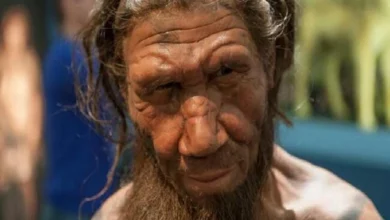Neanderthals: primates and first artists on earth

Ideas regarding long-dead relatives have shifted drastically in recent years. The Neanderthals, who seemed to be half-monkeys until recently, turned out to be skilled artisans, healers, and even painters. So, what exactly did they do?
Our species’ development seemed to be a nearly straight series of occurrences only a few decades ago. The Neanderthals superseded the archaic Homo erectus, and the more “perfect” Sapiens replaced the Neanderthals.
It was thought that Neanderthals couldn’t talk, had issues with abstract thinking, and didn’t know how to use weapons. In this context, our immediate predecessors of Homo sapiens seemed to have a distinct advantage: they were social, drawing, armed with spears and arrows, and generally quite intellectual. A succession of recent findings, however, have thrown this image into disarray. The Neanderthals did not seem to be the feral semi-animals that “Sapiens propaganda” depicts them to be.
A paper published in the PNAS journal demonstrates this. Its writers looked at the red lines spotted on the walls of Spain’s De Ardales Cave as early as 1921. It was discovered that the pigment streaks could not have developed as a consequence of normal biological or geological processes.
They were left by iron-rich rock fragments that were not found in the cave or its environs. And uranium-thorium dating revealed that the lines date back 45 to 66 thousand years, to a period when the nearby mountains were home to just Neanderthals.
It turns out that they picked up red iron-containing minerals with the intent of bringing them to the cave to paint. Nobody had ever considered that these “half-humans” might be capable of such a thing. Only at the turn of the century did attitudes concerning Neanderthals and their mental ability shift. And it was the discoveries discovered in a totally other cave that marked the start of these shifts.
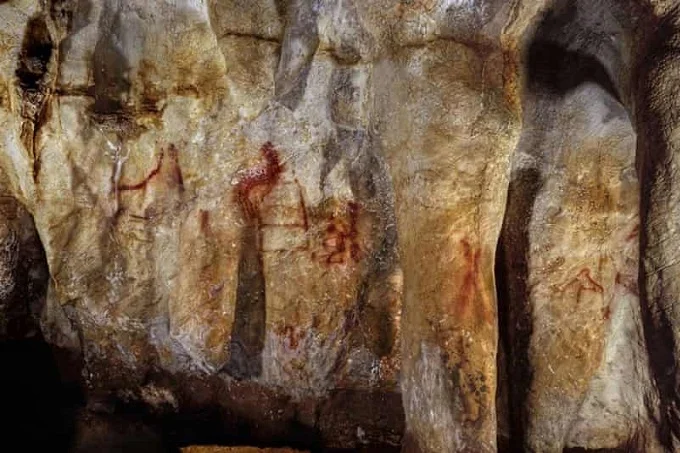
Taking care of Living and Death
At the beginning of the century, about 1950-1960. Nine Neanderthals’ bones were discovered by American archaeologists digging in Iraq’s Shanidar Cave. The skeleton of Shanidar-1, which belonged to a person of a respectable age (40-50 years old) and was terribly shabby, received special attention.
During his lifespan, the guy lost a portion of his right arm, and cracks from a heavy hit lingered on the left side of his skull, causing him to become blind in his left eye. Bony spurs in his ear canals hindered his hearing, and leg fractures that hadn’t healed properly made it difficult for him to walk.
To put it another way, the Neanderthal Nandi, as researchers dubbed him, was deafening, one-eyed, and one-armed. It’s unlikely that he could recover from such injuries on his own; in the meanwhile, his wounds healed, and he lived for many more years.
It is clear that he was well cared for, which might imply the presence of altruism and other behavioral attributes that are often associated with contemporary humans. Shanidar-2’s skeleton was discovered alongside a handful of stones (siliceous shale), some of which had previously been processed but none of which had been used. Immediately, indications of a big fire of appropriate age were discovered, indicating that the body was ritually burned together with the funeral paraphernalia required for life in the hereafter.
Returning to Spain, we’ll look at the Neanderthal bones discovered in 1994 at the El Sidron cave, where they lived some 49 thousand years ago. Scientists detected a young guy with signs of an abscess in his mouth cavity among them. According to DNA evidence on his teeth, he had taken pieces of the poplar, which is inedible but contains salicylic acid, the active element in aspirin.
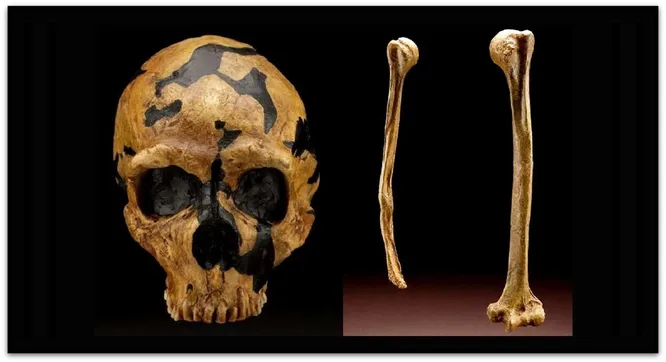
Furthermore, residues of Penicillium fungus, which generate the antibiotic of the same name, were discovered on Neanderthal teeth. If that’s the case, the “Neanderthal imprint” in antibiotic history predates our own. Much later evidence of medicinal fungal usage in Sapiens may be found in ancient Egypt, India, and Greece.
The Neanderthals’ fire and food
Regular strikes against the pyrite, an iron-bearing mineral that permits sparks to be struck, may damage certain tiny Neanderthal hand axes. These tools, it seems, functioned as flint and enabled the production of fire at the appropriate period. It’s worth mentioning that certain Tasmanian tribes did not employ this technology until the 19th century and instead transported coals from place to place according to Sapiens’ old practice.
The Neanderthals were apparently even skilled at dealing with fire than their Sapiens counterparts. Scientists have long been puzzled by the presence of manganese dioxide in the ashes of their fireplaces. It was supposed to be used as a black dye, yet it would seem that just taking coal from the same fire would suffice. Experiments conducted in 2018 revealed that when wood comes into touch with manganese powder, it ignites at a significantly lower temperature.
When the dioxide is heated, it transforms into Mn3O4, and the freed free oxygen interacts more readily, allowing combustion to begin at temperatures as low as 250 degrees Celsius. The flame may survive even at extremely low temperatures in this situation, enabling even moist wood to be lit. In Neanderthal Europe, such an opportunity might have been very significant. The development of trees was stunted during the ice period, but numerous grasses thrived, establishing the tundra steppe. Fuelwood was not as easily accessible as it would be in the future, when the weather was warmer. Even with moist wood, the ability to ignite it “with one spark” might be crucial for life.
The skewers for cooking meat were also supposedly known to the Neanderthals’ forefathers, the Heidelberg people. Wooden artifacts, on the whole, do not endure as long. Archaeologists working at a lignite quarry in Schöningen, Germany, were fortunate to unearth samples dating back 300 thousand years. Despite their size and weight, some wooden sticks on the weapon do not pull, but they do have residues of fried meat.
The Neanderthals’ spears and flutes
A minor wound from the strike of a sharpened weapon – most likely the point of a dart or maybe an arrow – was retained in the Shanidar-3 skeleton’s ninth rib. A throwing weapon was deemed to be too tough for Neanderthals in the 1960s. Furthermore, not only them, but also Sapiens, might have lived on the present-day Iraqi land at that period (50-70 thousand years ago). As a result, scientists hypothesized that they induced the trauma in the context of fierce competition among Homo species.
Sharpened spruce sticks were also discovered in the Schöningen mine, balanced by a slightly thicker front third, which is typical of throwing javelins (including modern sports ones). Horse bones (then, of course, wild horses) have also been discovered nearby; killing such a massive animal with a spear without a stone point is quite difficult.
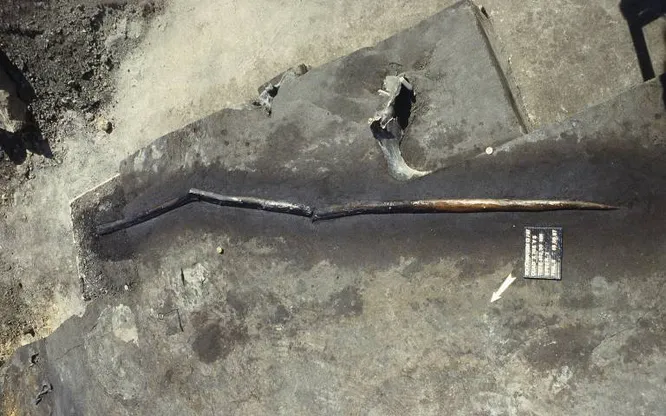
As a result, many individuals employed spear throwers for huge animals, and a spear-thrower piece was discovered near Schöningen. A hand-thrown javelin is difficult to disseminate faster than 20 m/s; the spear-thrower provides it a speed of 40 m/s, enabling him to deal with even a horse.
In the mid-1990s, a portion of a cave bear’s femur was discovered in the Slovenian cave Divje Babe. On the inner surface of the bone, there are two regular-shaped holes, and indications of processing – cleansing of the bone marrow – can be seen. The relic is about 43 thousand years old, and some experts think that hyenas gnawed at the bones and left marks on them. Despite the apparent similarity to the flute, it is impossible to think that the Neanderthals were capable of music (there were no Cro-Magnons in these places yet).
However, if the sample is compared to other comparable findings, it is clear that hyenas could not have created such clean holes. Punching a bear bone with your teeth is challenging enough, but doing it symmetrically in two locations with the same size teeth is much more difficult. Furthermore, it’s hard to conceive a hyena extracting the brain without eating the bone. As a result, the subject of the Neanderthals’ musicality remains unanswered.
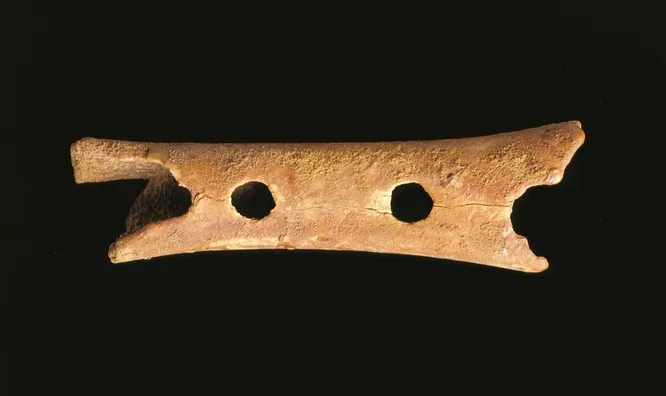
The Neanderthals’ religion and navigation
A unique series of stalagmites may be seen at the Brunickel Cave, which is located in France. They are arranged in an irregular circle in the middle of which is evidence of a campfire – a large number of burnt deer bones going back over 177 thousand years. Many academics believe that this structure resembles a sacrifice altar on which the sacrificial animal was burnt. If this is the case, the Neanderthals may have had religious beliefs.
It’s worth noting that even primordial mythology and religion are a complicated collection of concepts. It exists in some form or another in all known ancient peoples, but its prevalence among Neanderthals is a different story.
Religious ideas, after all, need abstract reasoning. And, most likely, speech. However, several typical Neanderthal tools have been discovered in Mediterranean islands such as Zakynthos, Sardinia, and others (finds in Crete are still debated). Even during Europe’s profound glacial, there was no land access to these islands. Is it true that the Neanderthals understood how to navigate?
It turns out that the Neanderthals were advanced enough to care for the disabled, be treated with helpful plants and molds, sketch, and light fires with complex tools. It’s probable they knew music and how to throw weapons, as well as religion and navigation.
All of this fits so well with the notion of primitive relatives that the genetic traces of Neanderthals, discovered not long ago in the great majority of Earth’s population, no longer appear strange. It would be simple to interbreed two closely related species with similar levels of development.
The really mysterious, on the other hand, is entirely another story. If the Neanderthals were so “sophisticated,” how did our forefathers manage to evict these indigenous peoples from Europe and Asia after barely leaving Africa? The puzzle is compounded by the fact that the population of European Neanderthals peaked 43 thousand years ago, right before Homo sapiens appeared. What was our immediate predecessors’ primary advantage that the Neanderthals lacked? It wasn’t for want of technological or cultural advancement.


